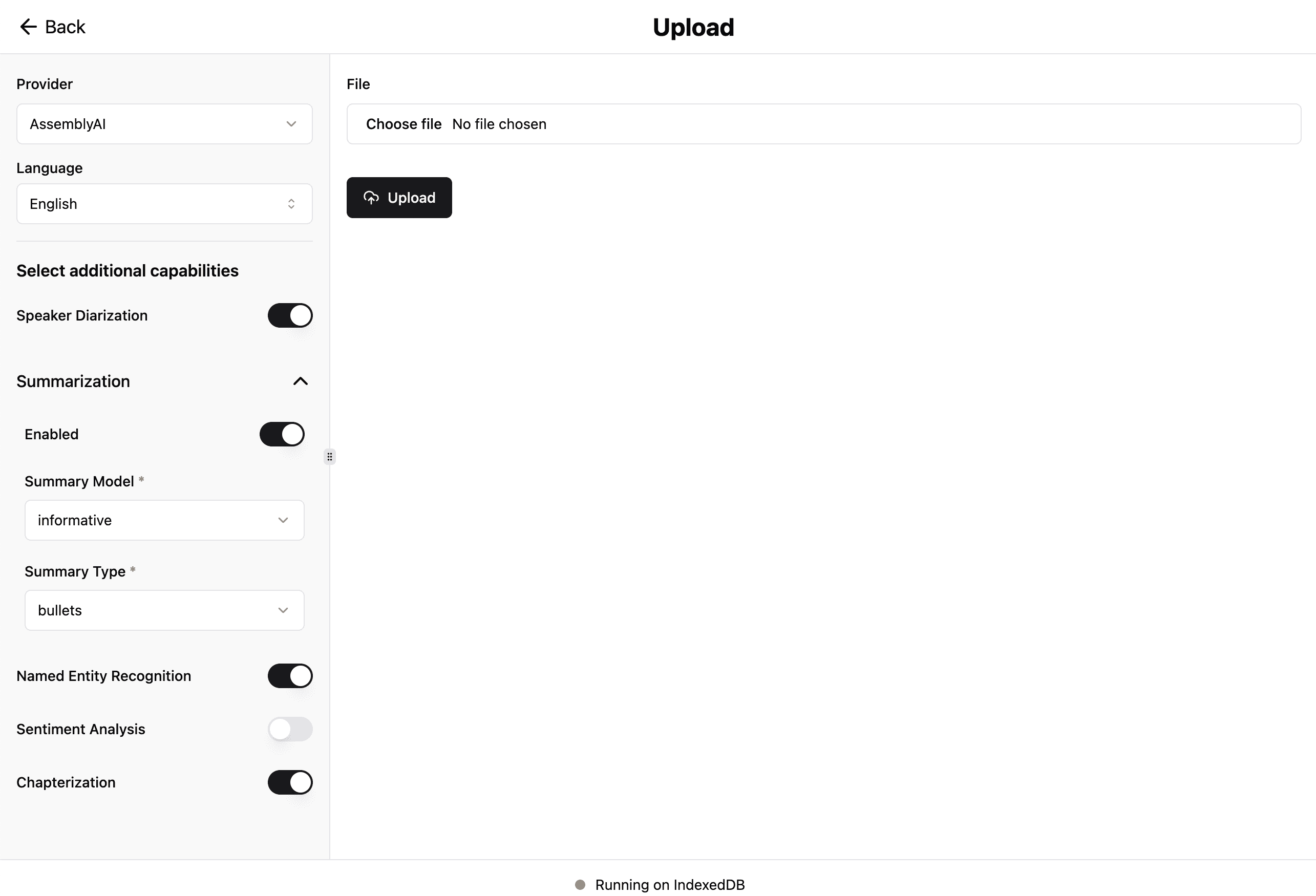
Transcription interface using the AssemblyAI API
Transcription Playground leveraging the AssemblyAI API, with an MIT License
Transcript Seeker integrates with AssemblyAI's transcription API, providing an open-source interface for AssemblyAI's speech-to-text capabilities.
With this integration, you can:
As an open-source project, Transcript Seeker allows for customization and extension of AssemblyAI API integrations.
With this integration, you can:
- Upload audio or video files for transcription using AssemblyAI's API
- View transcripts synchronized with your media
- Navigate content by selecting specific words in the transcript
- Use AssemblyAI's speaker diarization for multi-speaker content
- Access additional API features such as summarization, named entity recognition, and sentiment analysis
As an open-source project, Transcript Seeker allows for customization and extension of AssemblyAI API integrations.

The AssemblyAI API integration in Transcript Seeker includes:
AssemblyAI API options available in the implementation:
This implementation allows developers to modify or extend the AssemblyAI API integration as needed.
- File upload to AssemblyAI's servers
- Transcription initiation with configurable options
- Result polling and retrieval
- Processing and organizing speaker utterances
- Handling of additional features like summarization and entity detection
AssemblyAI API options available in the implementation:
- Speaker labels (diarization)
- Summarization (with customizable model and type)
- Entity detection
- Sentiment analysis
- Auto chapters
This implementation allows developers to modify or extend the AssemblyAI API integration as needed.
View on GitHubimport { z } from 'zod'; export const options = z.object({ speaker_labels: z.boolean().describe('Speaker Diarization').optional(), summarization: z.object({ summarization: z.boolean().describe('Enabled').optional(), summary_model: z.enum(['informative']).default('informative').describe('Summary Model'), summary_type: z.enum(['bullets']).default('bullets').describe('Summary Type'), }), entity_detection: z.boolean().describe('Named Entity Recognition').optional(), sentiment_analysis: z.boolean().describe('Sentiment Analysis').optional(), auto_chapters: z.boolean().describe('Chapterization').optional(), });

To use Transcript Seeker with the AssemblyAI API integration:
Ensure Git, Node.js, and Yarn are installed on your system before running the script.
- Save the script below as run.sh and make it executable:
- Open the application in your browser once the development server starts.
- Navigate to "Settings" and enter your AssemblyAI API key.
- Choose "AssemblyAI" as the transcription service when uploading a file.
chmod +x run.sh ./run.sh
Ensure Git, Node.js, and Yarn are installed on your system before running the script.
View on GitHub#!/bin/bash # 🚀 Quick Start for Transcript Seeker 🚀 # Save this file as run.sh, chmod +x run.sh, and run it # ⚠️ Make sure you have Git, Node.js, and Yarn installed before proceeding! # clone and navigate to the repo git clone https://github.com/Meeting-Baas/transcript-seeker && cd transcript-seeker # Install dependencies echo "🔧 Installing dependencies..." yarn install && yarn install:all || { echo "❌ Error: Failed to install dependencies"; exit 1; } echo "🏗️ Building dependencies..." yarn run build || { echo "❌ Error: Failed to build dependencies"; exit 2; } echo "📄 Copying .env file..." cp .env.example .env || { echo "⚠️ Warning: Failed to copy .env file. You may need to set up environment variables manually."; } echo "🚀 Starting the development server..." cd client && yarn run dev || { echo "❌ Error: Failed to start the development server"; exit 3; }

Open-Source